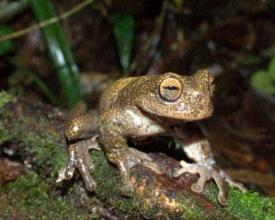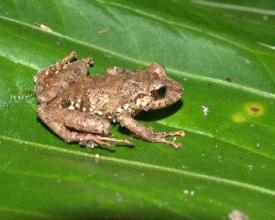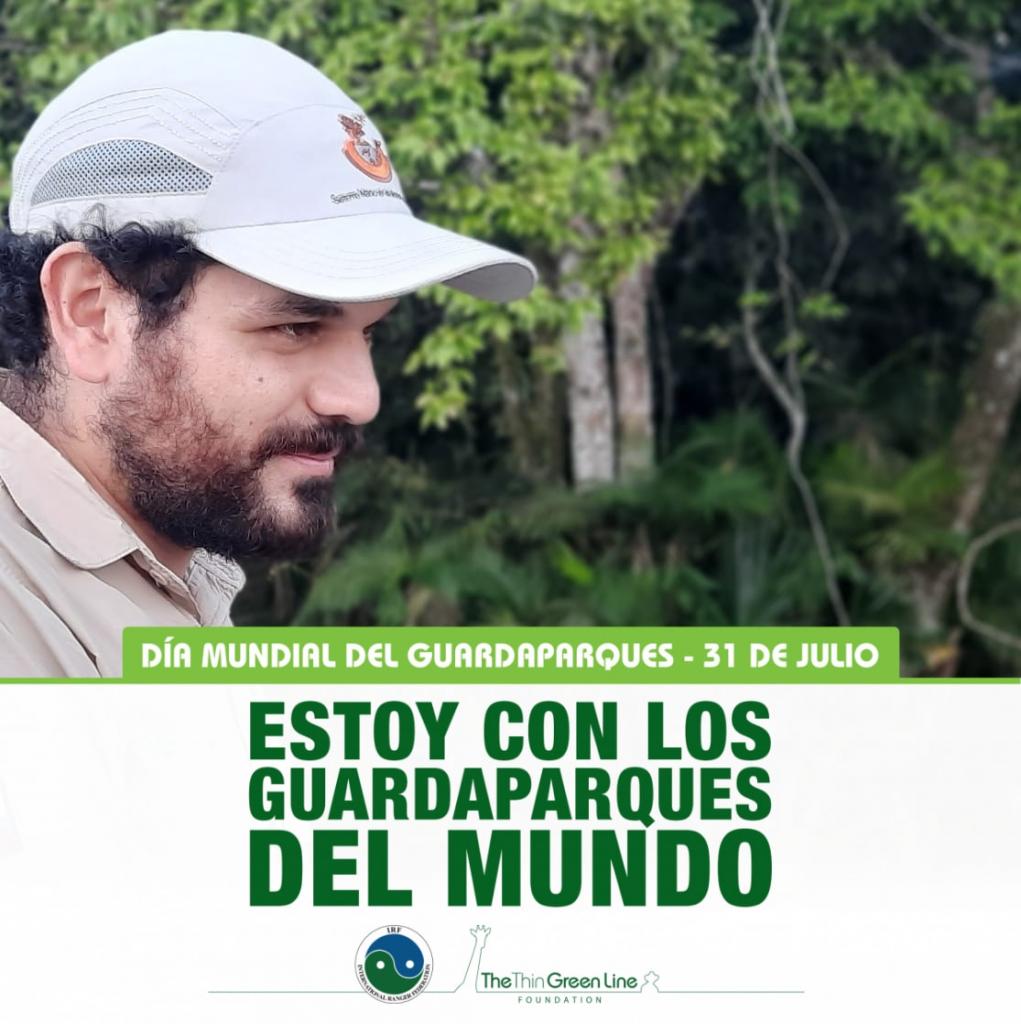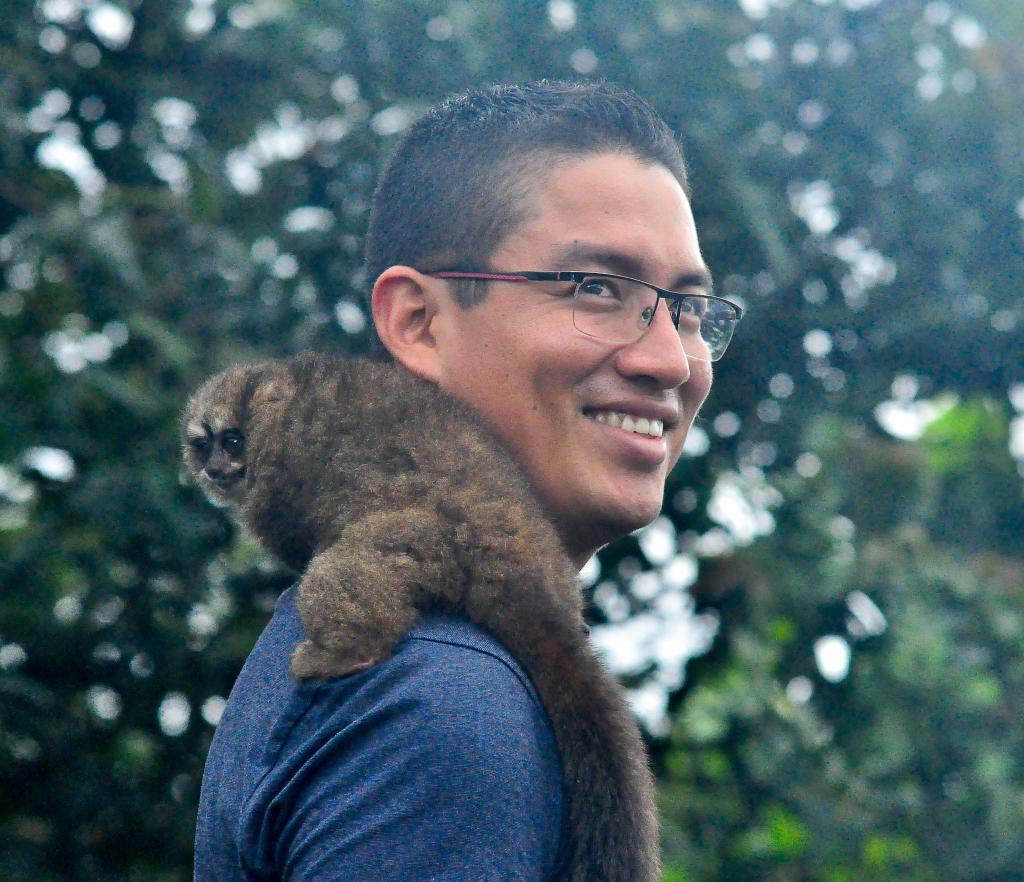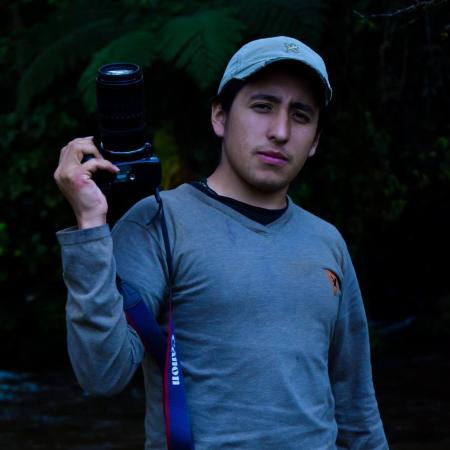
Amphibians as the basis for environmental education and monitoring programs in the Cerro Plateado Biological Reserve.

The Cerro Plateado Biological Reserve is a hotspot for amphibian conservation because it is located in an area of connectivity between the Andes and the Amazon. Amphibians are one of the conservation values of the area. However, there was no updated information; therefore, a study was conducted in coordination with the Universidad Técnica Particular de Loja.
Three sampling zones were defined within the reserve: Nayump, Romerillos and Las Tarantulas. As a result of this study, the list of amphibian species increased by 33%, from 69 species to 89, distributed in 11 families. Three species: Hyloscirtus condor, Pristimantis muranunka, and Pristimantis yantzaza, were determined as indicators. With the information obtained, brochures, triptychs, posters, and puzzles have been generated for environmental education activities in the area. This will allow the population to learn about the importance of amphibians and generate behavioral changes for the protection of these species and their habitat.
Context
Challenges addressed
- Because of their endemism, amphibians are one of the conservation values of the Cerro Plateado Biological Reserve; however, existing data are very limited and it is necessary to monitor them to determine their conservation status in the area. This implies generating an adequate methodology that allows park rangers to generate and systematize useful information for the area's management.
- The communities settled in the buffer zone of the Cerro Plateado Biological Reserve are unaware of the functions that amphibians fulfill in nature and therefore do not raise awareness or take actions for their conservation. With this research, they have begun to change their perception of amphibians, as they learn about the importance of these species as indicators of a healthy environment.
- It is important to reinforce control and vigilance activities in places prone to illegal entry into the protected area and to avoid anthropogenic activities that cause fragmentation of the reserve's ecosystems.
Location
Process
Summary of the process
- The study of amphibians has made it possible to implement playful activities in the Environmental Education talks, which allow for better sensitization of the school population settled in the buffer zone of the protected area, as well as a better interpretation of the interaction between the forest and amphibians as bio-indicators in nature.
- Through different trainings, visits to the Shuar communities of the Muranunka Association and colonists located in the buffer zone, posters and brochures have been handed out about the existing amphibian species that are also conservation values.
- The results of the study serve as a guiding tool for the park rangers of Cerro Plateado Biological Reserve.
- Based on this, a methodology for amphibian monitoring has been established, which is applied by park rangers during tours in the protected area and its zone of influence to comply with the indicators of the successful results component of the Green List Standard.
- Based on this, routes were established for control and surveillance at critical sites for these species.
Building Blocks
Environmental education and awareness
Environmental education is a powerful tool that helps the population to learn in a practical and attractive way new knowledge that allows them to create an adequate environmental awareness about protected areas and their biodiversity.
Enabling factors
- Generate new knowledge based on research or local studies of species important to the protected area.
- Elaboration of didactic material for environmental interpretation (triptych, posters, puzzles, primers) to accompany talks or presentations to the inhabitants of the buffer zone.
Lesson learned
- Knowledge about amphibians has allowed the park ranger staff to put much more emphasis on environmental education talks about amphibians and their fundamental role in nature.
- The development of didactic material has made it possible to inform the public about the amphibian species that exist in Cerro Plateado Biological Reserve.
Development of adapted methodologies for monitoring
For the development of biological monitoring processes of conservation values, it is vital to have validated methodologies adapted to the local reality, which requires the support of specialized institutions.
Enabling factors
- Establishment of strategic alliances with institutions with experience in biological monitoring that have developed methodologies adapted to the reality of the area.
- With the results of the analysis of taxonomic distinction, the greater similarity in the composition of the community between the sites of Romerillos and Nayumbi (Nuevo Paraíso parish, canton Nangaritza) compared to the site of Las Tarantulas (La Canela parish, canton Palanda). Based on this, routes were established for the control and surveillance of critical sites for these species.
Lesson learned
- Through inter-institutional academic support, an appropriate methodology has been developed to allow park rangers to monitor one of the area's conservation values and to have indicators on the population status of the main amphibians, thus guiding management decisions in the area. This will also serve as input for the definition of a monitoring program for the Reserve and contribute to the process of obtaining the IUCN Green List Standard.
- Scientific research will help define and/or reorient patrol routes focused on preserving amphibian habitat.
Impacts
- Knowledge of new amphibian species by the park rangers of the Cerro Plateado Biological Reserve.
- Based on the results obtained, informative material (leaflets, brochures, posters, puzzles) was created to implement in the environmental education program in the schools located in the buffer zone of the protected area to raise public awareness about the importance of conserving the biodiversity of the Cerro Plateado Biological Reserve.
- Three species of amphibians were defined as the main indicators of the quality of the water and flora: Hyloscirtus condor, Pristimantis muranunka, and Pristimantis yantzaza.
- Two more sites were defined for monitoring the amphibian species described above, which contributes to compliance with the indicators of the Green List Standard.
- The information gathered has made it possible to strategically plan the sectors for control and surveillance, species monitoring, and drone overflights to verify in the field illegal actions that could fragment the ecosystem.
- The information generated in the amphibian study will serve as a basis for the scientific community in future studies.
Beneficiaries
1,800 students from schools and colleges have received informative material.
Reserve personnel have the inputs needed to implement the monitoring program and other activities.
Researchers have new amphibian records in the reserve.
Sustainable Development Goals
Story

The first impression I had of the Cerro Plateado Biological Reserve was that it was an incredible place in terms of biodiversity but very little was known about it. This was the turning point for me to decide to do my thesis there. My research work consisted of documenting the amphibian species of the site. The work was done in the best way with the support of all the staff of the protected area, especially the park rangers who accompanied and guided us on our expeditions. During the expeditions, which were initially aimed at looking for amphibians, they were so well received that mammal specialists also joined us. The results of our scientific expeditions were really incredible and showed new findings for science and the discovery of new populations of emblematic species such as Hyloscirtus condor. The contribution of these results for the protected area became an important conservation value, now the reserve is also known as a site for the conservation of amphibians, which helps the population to gradually no longer consider them as "useless" species but as important habitat indicators and even potential generators of economic income through activities such as specialized tourism. Finally, one of the greatest achievements during the expeditions was to inspire and train the park rangers of the area, showing them the methodologies applied for the study and, more importantly, transmitting knowledge about the species found in the protected area.
Santiago Hualpa
